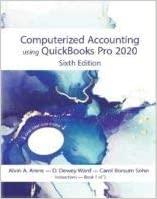- Referencing the screenshots below, what is the monetary effect of the depreciation lives change? How and by how much ($) will this change affect future reported profits?

Accounting Changes: Effective November 1, 1983, the Corporation includes in its net sales products purchased from Kobe Steel, Ltd. and sold by the Corporation, to reflect more effectively the nature of the Corporation's transactions with Kobe. Previously only the gross margin on Kobe-originated equipment was included. During fiscal year 1984 such sales aggregated $28.0 million. Also, effective November 1, 1983, the financial statements of certain foreign subsidiaries are included on the basis of their fiscal years ended July 31. This change had the effect of increasing net sales by $5.4 million for the year ended October 31, 1984. The impact of these changes on net income was insignificant In 1984, the Corporation has computed depreciation expense on plants, machinery and equipment using the straight-line method for financial reporting purposes. Prior to 1984, the Corporation used principally accelerated methods for its U.S. operating plants. The cumulative effect of this change, which was applied retroactively to all assets previously subjected to accelerated depreciation, increased net income for 1984 by $11.0 million or $.93 per common and common equivalent share. The impact of the new method on income for the year 1984 before the cumulative effect was insignificant. As a result of the review of its depreciation policy, the Corporation, effective November 1, 1983, has changed its estimated depreciation lives on certain U.S. plants, machinery and equipment and residual values on certain machinery and equipment, which increased net income for 1984 by $3.2 million or $.27 per share. No income tax effect was applied to this change. The changes in accounting for depreciation were made to conform the Corporation's Note 1 Summary of Significant Accounting Policies Consolidation - The consolidated financial statements include the accounts of all majority-owned subsidiaries except a wholly- owned domestic finance subsidiary, a subsidiary organized in 1982 as a temporary successor to a distributor, both of which are accounted for under the equity method, and a wholly-owned Brazilian subsidiary, which is carried at estimated net realizable value due to economic uncertainty. All related significant intercompany balances and transactions have been eliminated in consolidation. Financial statements of certain consolidated subsidiaries, principally foreign are included, effective in fiscal year 1984, on the basis of their fiscal years ending September 30, previously, certain of such subsidiaries had fiscal years ending July (See Note 2). Such fiscal periods have been adopted by the. subsidiaries in order to provide for a more timely consolidation with the Corporation. Inventories - The Corporation values its inventories at the lower of cost or market Cost is determined by the last-in, first-out (LIFO) method for inventories located principally in the United States, and by the first-in, first-out (FIFO) method for inventories of foreign subsidiaries Operating Plants, Equipment and Depreciation - Properties are stated at cost. Maintenance and repairs are charged to expense as incurred and expenditures for betterments and renewals are capitalized. Effective in 1981, interest is capitalized for qualifying assets during their acquisition period. Capitalized interest is amortized on the same basis as the related asset. When properties are sold or otherwise disposed of the cost and accumulated depreciation are removed from the accounts and any gain or loss is included in income. Depreciation of plants and equipment is provided over the estimated useful lives of the related assets, or over the lease terms of capital leases, using effective in fiscal year 1984, the straight-line method for financial reporting, and principally accelerated methods for tax reporting purposes. Previously, accelerated methods, where applicable, were also used for financial reporting purposes (See Note 2). For U.S. income tax purposes, depreciation lives are based principally on the Class Life Asset Depreciation Range for additions, other tha: buildings, in the years 1973 through 1980, a1 on the Accelerated Cost Recovery System fo all additions after 1980 Discontinued facilities held for sale are carrie at the lower of cost less accumulated depreciation or estimated realizable value, which aggregated $4.9 million and $3.6 million at October 31, 1984 and 1983, respectively, and were included in Other Assets in the accompanying Balance Sheet. Pension Plans - The Corporation has pension plans covering substantially all of its employees. Pension expenses of the principal defined benefit plans consist of current service costs of such plans and amortization of the prior service costs and actuarial gains and losses over periods ranging from 10 to 30 years. The Corporation's policy is to fund at a minimum the amount required under the Employee Retirement Income Security Act of 1974 Income Taxes - The consolidated tax provision is computed based on income and expenses recorded in the Statement of Operations. Prepaid or deferred taxes are recorded for the difference between such taxes and taxes computed for tax returns. The Corporation and its domestic subsidiaries file a consolidated federal income tax return. The operating results of Hamischfeger GmbH are included in the Corporation's U.S. income tax returns Additional taxes are provided on the earnings of foreign subsidiaries which are intended to be remitted to the Corporation. Such taxes are not provided on subsidiaries unremitted camings which are intended to be permanently reinvested. Investment tax credits are accounted for under








